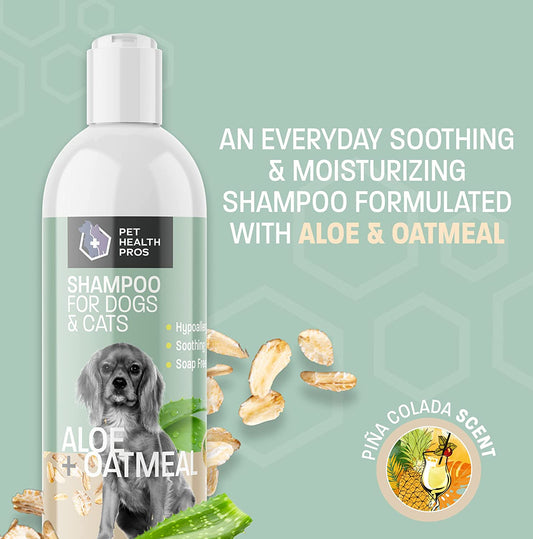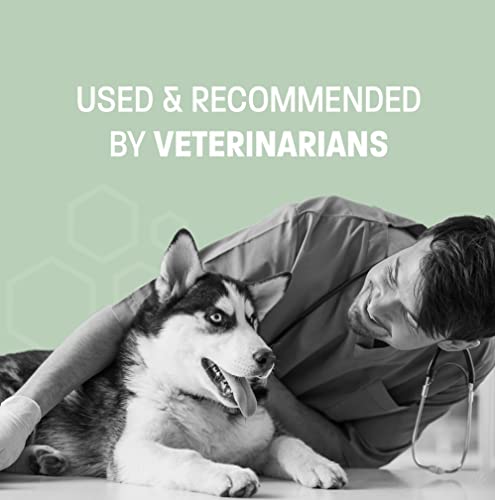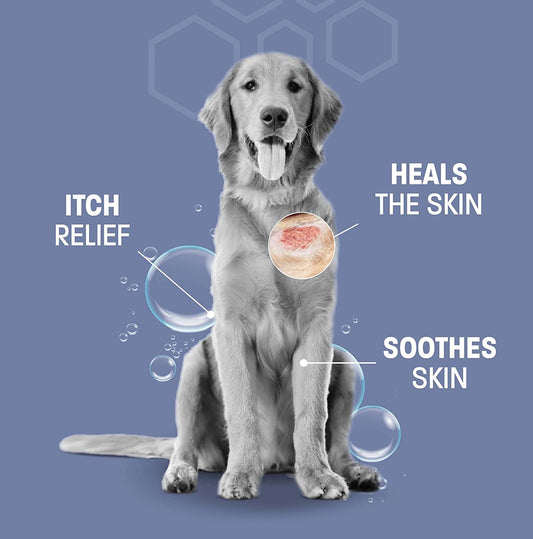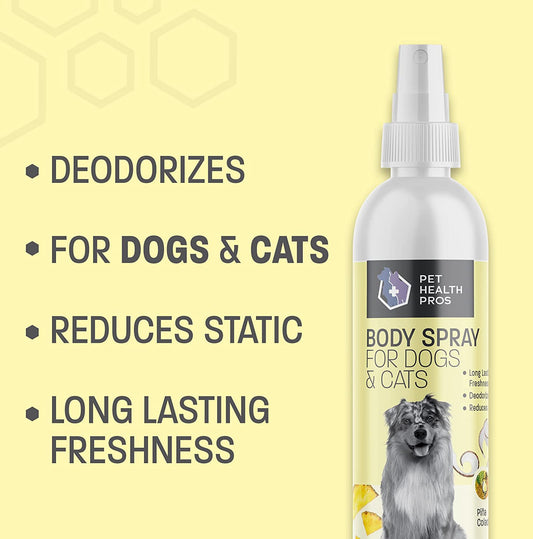Choosing the right dog chewing repellent can be tricky, but it's important for keeping your home safe and your dog healthy. Dogs chew for many reasons, and sometimes this habit can lead to trouble. This guide will help you understand why dogs chew and how to pick the best repellent for your furry friend.
Key Takeaways
- Dogs chew for various reasons, including boredom, teething, and anxiety.
- Excessive chewing can lead to health issues and damage to your home.
- There are natural, chemical, and homemade repellents available.
- It's crucial to read labels and choose safe ingredients for your dog.
- Using a repellent is just one part of preventing destructive chewing; training and providing chew toys are also important.
Understanding the Need for Dog Chewing Repellent
Common Reasons Dogs Chew
Dogs chew for various reasons, including teething, boredom, anxiety, and curiosity. Chewing is a natural behavior for dogs, but it can become problematic when they start chewing on inappropriate items like furniture or shoes.
Potential Dangers of Excessive Chewing
Excessive chewing can lead to several dangers, such as dental damage, choking hazards, and ingestion of harmful substances. It's crucial to address this behavior to keep your dog safe and your belongings intact.
Behavioral vs. Medical Causes
Chewing can stem from both behavioral and medical causes. Behavioral reasons include boredom and anxiety, while medical causes might involve dental issues or nutritional deficiencies. Identifying the root cause is essential for effective treatment.
Types of Dog Chewing Repellents
Choosing the right dog chewing repellent can be a game-changer for pet owners. There are several types of repellents available, each with its own benefits and drawbacks. Understanding these options can help you make an informed decision.
Natural Repellents
Natural repellents are made from ingredients found in nature. They are often preferred by pet owners who want to avoid chemicals. Common ingredients include citrus, vinegar, and essential oils. These repellents are generally safe but may not be as effective for all dogs.
Chemical Repellents
Chemical repellents are formulated to be highly effective. They often contain bitter substances that dogs find unpleasant. These products are designed to stop dogs from chewing on furniture, shoes, and other household items. However, it's important to read the labels carefully to ensure they are safe for your pet.
Homemade Solutions
For those who prefer a DIY approach, homemade solutions can be a good option. Simple mixtures like water and vinegar or lemon juice can be sprayed on items you want to protect. While these solutions are easy to make, they may require more frequent application to remain effective.
When choosing a repellent, consider your dog's specific needs and any potential allergies. Always test a small area first to ensure there are no adverse reactions.
Key Ingredients to Look for in Dog Chewing Repellents
Safe and Effective Ingredients
When choosing a dog chewing repellent, it's crucial to look for ingredients that are both safe and effective. Grannick's Bitter Apple is a popular choice, primarily containing water, isopropanol (as a bittering agent), and natural bitter extracts. These ingredients are generally safe for dogs and effective in deterring chewing.
Ingredients to Avoid
Not all ingredients are safe for your furry friend. Avoid repellents that contain harsh chemicals or toxins. Ingredients like ammonia or bleach can be harmful and should never be used in dog repellents. Always read the label to ensure the product is safe for your pet.
Understanding Labels and Certifications
Understanding the labels and certifications on dog chewing repellents can help you make an informed choice. Look for products that have been tested and certified by reputable organizations. This ensures that the product meets safety and efficacy standards. Additionally, check for any warnings or contraindications to ensure the product is suitable for your dog's specific needs.
How to Apply Dog Chewing Repellent Effectively
Application Methods
Applying dog chewing repellent correctly is crucial for its effectiveness. Targeted use of no chew spray on problem areas like furniture, shoes, and cords can help protect these items. Make sure to follow the instructions on the product label for the best results.
Frequency of Application
The frequency of application depends on the type of repellent you are using. Some products may need to be reapplied daily, while others can last for several days. Always check the label for specific instructions.
Safety Precautions
When using any dog chewing repellent, it's important to follow safety guidelines. Avoid spraying the repellent near your dog's eyes, nose, or mouth. Additionally, ensure the area is well-ventilated during application to prevent any respiratory issues for both you and your pet.
Evaluating the Effectiveness of Dog Chewing Repellents
Signs of Success
To know if a dog chewing repellent is working, look for changes in your dog's behavior. A successful repellent will make your dog avoid the treated areas or items. You might notice less damage to furniture, shoes, or other household items. Keep an eye on your dog's chewing habits to see if they are improving.
Common Challenges and Solutions
Sometimes, repellents don't work as expected. Your dog might still chew on treated items. This could be due to the repellent's scent fading or your dog getting used to it. To solve this, reapply the repellent regularly and try different products to find the most effective one. Remember, consistency is key.
When to Consult a Professional
If your dog's chewing problem persists despite using repellents, it might be time to seek help from a professional. A vet or a dog behaviorist can provide insights into underlying issues, whether they are medical or behavioral. They can also recommend other strategies or treatments to stop your dog from chewing.
Additional Tips for Preventing Destructive Chewing
Providing Appropriate Chew Toys
One of the best ways to prevent destructive chewing is by giving your dog suitable chew toys. Chew toys can keep your dog entertained and satisfy their natural urge to chew. Make sure to choose toys that are safe and durable.
Training and Positive Reinforcement
Training your dog with positive reinforcement can help curb destructive chewing. Reward your dog when they chew on appropriate items and gently correct them when they chew on something they shouldn't. This method helps in reinforcing positive behavior.
Environmental Enrichment
Dogs often chew out of boredom or anxiety. Providing environmental enrichment can reduce these triggers. This can include interactive toys, regular exercise, and mental stimulation activities.
Combining dog no chew spray with behavioral training can create a harmonious environment for pets and their owners.
Choosing the Right Dog Chewing Repellent for Your Pet
Considering Your Dog's Age and Size
When selecting a dog chewing repellent, it's important to consider your dog's age and size. Puppies and smaller dogs may require milder formulas, while larger breeds might need something stronger. Always check the product label to ensure it's suitable for your dog's specific needs.
Assessing Your Dog's Health Needs
Your dog's health is another crucial factor. If your pet has allergies or sensitive skin, opt for repellents with natural ingredients. Avoid products with harsh chemicals that could cause irritation. Consult your vet if you're unsure about the best option for your dog's health.
Reading Product Reviews and Recommendations
Before making a purchase, read product reviews and recommendations. Look for feedback from other pet owners who have faced similar issues. This can provide valuable insights into the effectiveness of the repellent. Remember, while no chew sprays provide temporary relief, training through positive reinforcement is often a more effective long-term solution.
Choosing the right dog chewing repellent involves understanding your dog's unique needs and preferences. Take the time to research and select a product that will be both safe and effective for your furry friend.
Finding the perfect dog chewing repellent can be tricky. You want something safe and effective. Our website offers a variety of options to help you choose the best one for your furry friend. Visit us today to explore our top-rated products and make your pet's life more comfortable.
Conclusion
Choosing the best dog chewing repellent is crucial for keeping your furry friend safe and your belongings intact. By considering factors like the type of repellent, ingredients, and your dog's specific needs, you can find a product that works effectively. Remember, what works for one dog might not work for another, so it may take some trial and error. Always consult with your vet if you have any concerns. With the right approach, you can help your dog develop better chewing habits and enjoy a happier, healthier life.
Frequently Asked Questions
Why do dogs chew on things?
Dogs chew on things for various reasons, such as teething, boredom, anxiety, or curiosity. It's a natural behavior for them.
Are natural repellents safe for my dog?
Yes, most natural repellents are safe for dogs. They often contain ingredients like bitter apple or citrus, which dogs dislike but are not harmful.
How often should I apply the chewing repellent?
The frequency of application depends on the product. Generally, you should reapply it every few days or after it gets washed off.
Can chewing repellents harm my dog?
Most chewing repellents are designed to be safe for dogs. However, it's important to read the label and follow the instructions to avoid any potential harm.
What should I do if the repellent doesn't work?
If the repellent isn't effective, you might need to try a different type or consult with a veterinarian or a pet behaviorist for further advice.
Are there any ingredients I should avoid in dog chewing repellents?
Avoid repellents with harsh chemicals or ingredients that can be toxic to dogs. Always check the label for any warnings or harmful substances.









